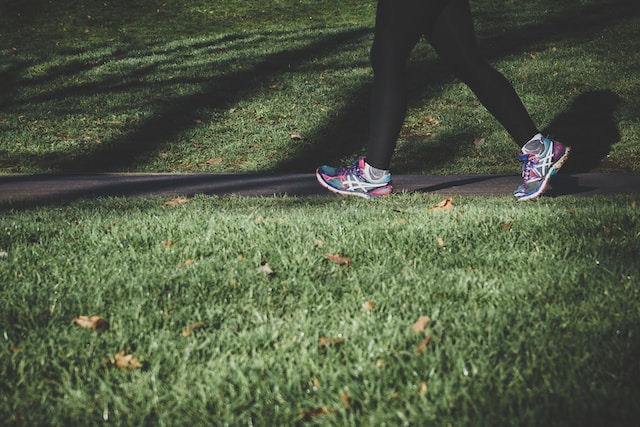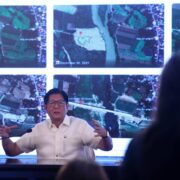These legs are made for walking

And that’s just what I do, most of these days.
Two years of mostly being locked in the house because of quarantine protocols during the COVID-19 pandemic made me realize the importance of walking. Yes, at first, I savored my hours and hours of watching Netflix and working from home, ‘couch-potatoing’ my days away. But when the locked-in days turned to weeks, and then to months, all that inactivity clawed back at me. My body started aching, and felt like it weighed a ton. My brain was foggy, and I couldn’t focus.
When the lockdowns were eased, and we were allowed to go out once more, that’s when I also started my walking exercises. For, at least three times a week, and two hours each time, I walked. With the alternating brisk and leisurely walks, my energy returned, and my mind cleared up. My body aches disappeared, and I generally felt more upbeat.
But, as in everything in this life, good things come with trade-offs. Walking in a village that’s smack in the middle of Las Piñas’ “Friendship Route” (where private motorists from adjoining subdivisions could freely pass through in order to bypass the perennially congested Alabang-Zapote Road), I had no choice but to be exposed to the pollution-filled emissions of cars, jeeps, trucks, motorcycles and tricycles. By the time I’d come home after a couple of hours, my nostrils were lined with black soot, and I was coughing my lungs out.
There would be days that I drove myself to nearby big commercial properties that offered walkable pathways, like Filinvest Corporate City in Alabang, or to Ayala Land’s Vermosa along Daang Hari, just to be able to walk in peace and quiet—away from the noise and pollution of internal combustion engine-powered vehicles.
People need cars to move about, that’s for sure. But our bodies need to walk. Walking is the most basic of the active exercises to promote cardiovascular health. But it does so much more than just to help keep our hearts beating healthy. It keeps our mind on our toes, as well.
And so, regardless of anything else, my bare minimum resolution for 2024 is to walk. And walk some more, even if walking on Metro Manila’s sidewalks is like playing “patintero” or “piko” with vendors, open canals and manholes, cyclists, electric posts, extended garages, and parked cars. Likely, during these walks, I may even determine who to vote for in the next local and national elections. I’ll be making mental notes of those politicians who advocate for more walkable streets, who push for more enforceable road-sharing laws, and those who actively promote a pedestrian-friendly urban environment. I doubt, however, if I can find any in my city. There are hardly any pedestrian-friendly spots accessible to the general public here.
In my village, for example, the local government is busy standardizing the sidewalks on both sides of the road, reclaiming extended garages and mini gardens from the residents, and then pouring concrete to create a 1.5-meter wide sidewalk. But as soon as the concrete hardens, the sidewalk becomes parking for cars, or a spot for vendors. Once more, pedestrians are forced to walk on the road itself.
Not only does concreting the sidewalk become a useless endeavor, it also contributes to what scientists and urban planners call the “urban heat islands” (UHI) effect.
The United States Environmental Protection Agency wrote that “Urban heat islands” occur when cities replace natural land cover with dense concentrations of pavement, buildings, and other surfaces that absorb and retain heat.
This is described more in detail by Malaysian-based civil engineering experts in their article “The Impact of Road Pavement on Urban Heat Island (UHI) Phenomenon” which was published in the International Journal of Technology. In it, they explained that UHI is a “climatic phenomenon caused by modifications to the climate, due to changes in the form and composition of the land surface and atmosphere.”
Their article also suggested ways to minimize the effects of UHI: “Implementation of green walls; implementation of cool/green roofs; minimizing the environmental impact of asphalt pavement; planting trees and vegetation; implementation of permeable pavement or surfaces; implementation of cool pavement.”
Still, regardless of what condition our roads (and sidewalks) may be in, there’s really no excuse for me not to go out and walk, especially in this stage of my life.
My doctors have told me to walk more. Sitting for so long in front of my PC or TV, or inside cars will certainly not help address my hormonal imbalance and other lifestyle-related diseases. The Harvard TH Chan School of Public Health says walking helps to boost energy levels by releasing certain hormones like endorphins and delivering oxygen throughout the body.
“Brisk walking is considered a moderate-intensity, low-impact workout that does not exert excess strain on joints (hip, knee and ankles) that are susceptible to injury with higher-impact workouts.”
Walking is much better for the environment. If the destination is less than 3 km, I’d choose to walk instead of using my car. Less fossil fuels are burned, meaning less amounts of carbon dioxide are released, which means less climate change-inducing greenhouse gases go up the atmosphere. And even if your car is an EV, it’s still better for the planet if you walked that short distance.
Walking makes us better thinkers. I’ve read about philosophers who regarded walking as a way to think clearly. Walking is a “super power,” as written in one of the 2019 stories of Amy Fleming in The Guardian. She interviewed neuroscientist Shane O’Mara who believes that plenty of regular walking unlocks the cognitive powers of the brain like nothing else. She wrote: “We are wandering the streets of Dublin, discussing O’Mara’s new book, ‘In Praise of Walking,’ a backstage tour of what happens in our brains while we perambulate.” She quoted O’Mara saying: “Our sensory systems work at their best when they’re moving about the world.”
Indeed, walking uplifts moods, energizes the body, and tunes up the mind. Walking is an immediate fixer-upper. Whenever we get into a painful or traumatic experience that breaks our spirit, someone wise would suggest, “Walk it off. By the time you get back, you’ll feel much better.”















